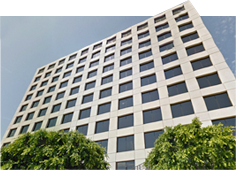The L-1 Visa: Key to Opening a New Office or Transferring a Qualifying Employee to the U.S.
Employees of an international company that are transferred into the U.S. temporarily to work for the company’s parent, branch, affiliate or subsidiary enter the U.S. on an L-1 Intra-company Transferee visa. This classification of visa is issued to employees that are at the managerial or executive level (L-1A) or have specialized knowledge (L-1B) and are entering the U.S. to work in a similar capacity. As a prerequisite, the employee must have spent at least one continuous year out of the preceding three years working for the company outside of the U.S. The U.S.-based company must continue operations for the duration of the authorized stay and the visa holder should generally expect to be transferred back upon completion of the visa’s purpose.
Defining a Manager, Executive and Specialized Knowledge Employee
A Manager: is an individual that manages either the entire company, or an entire department, subdivision or component. A manager is typically not a front-line supervisor, but rather someone that supervises and controls the work of other professional or managerial employees. A manager can also manage an essential function of the company and be authorized to make critical decisions concerning the day-to-day operations of his or her unit of subordination.
An Executive: is an individual who, as a part of their job: 1) Receives only general supervision or directives from high-level executives, directors or shareholders; 2) possesses extensive discretionary decision-making authority; 3) directs the management of the organization or a significant component of it; and 4) sets the goals or policies of the organization or one of its parts.
A Specialized Knowledge Employee: has knowledge of the employer company’s products, services, research, equipment, techniques, management or other interests and its application in international markets, or sophisticated knowledge of the company’s processes and procedures. The level of knowledge must be such that it is not widely held throughout the industry, but is truly specialized.
What is L-1 Status?
L-1 status allows the foreign worker to work legally in the U.S. for up to three years on the first visa. NOTE: New Office L-1s are only permitted one year, see “New Office L-1 Visa” below. Extensions of the status is possible, with a maximum time in the U.S. of seven years (manager or executive) or five years (specialized knowledge employee). If the L-1 employee has previously worked in the U.S. under an H-1B visa, however, time spent in the U.S. counts toward the five-or-seven-year maximum. L-1 beneficiaries, like H-1B visa holders, are permitted to have dual intent. That is, they can be petitioned for permanent residence despite being in the U.S. in a temporary visas status.
L-2 Dependent Visas
The spouse and minor children of the L-1 visa holder may obtain L-2 visas to the U.S. The spouse is allotted work authorization. This is one of the major advantages of the L-1, as compared to an H-1B—whereas the H-4 dependent cannot work, an L-2 spouse can. The L-2 spouse employment is “open market”, meaning there is no requirement the L-2 also be employed at the petitioning L-1 entity, but rather, he or she can work in any qualifying position in the U.S.
L-1 Visa for a New Business
L-1 employees are sometimes sent to the U.S. for the purpose of establishing an international company’s branch, affiliate or subsidiary. “New Office” L-1s are a subset of the L-1 classification and are designed for those offices which are, at the time of the filing, not fully established or able to support the services of a full-time manager or executive.
Whereas other L-1 types have more stringent requirements for showing ongoing business activities, New Office L-1s primarily need only need to provide a lease for its office as evidence of a secured office location and a viable business plan to show that the company will develop in the future to an extent such that the need for a managerial or executive position is foreseeable within a year.
New Office L-1s are approved for a one year period, after which the company must demonstrate that it is doing business in order for the petition and alien’s stay to be extended beyond one year.
In planning for overseas growth and personnel placement, companies considering the L-1 Visa process sometimes compare the L-1 classification to the H-1B, E-2, and EB-1 options, among other immigration solutions. Contact an Experienced Immigration Attorney for a detailed discussion regarding your company’s needs.






